Q: AlienVault launched USM Anywhere earlier this year. How does it build on your threat detection and management capabilities and what specific business need does it help address?
AlienVault pioneered its unified approach to threat detection by combining several essential security capabilities–asset discovery, vulnerability assessment, intrusion detection, behavioral monitoring, and SIEM—into a single platform, Unified Security Management (USM). USM was designed to make threat detection, incident response, and compliance management more affordable, faster to deploy, and easier to manage for resource-constrained IT security organizations of all sizes.
Our USM Anywhere launch in February 2017 marks an important evolution for resource-constrained organizations, allowing them to extend their threat detection and incident response capabilities to the cloud. USM Anywhere enables organizations to monitor their on-premises infrastructure, cloud infrastructure, and cloud services to identify threats that can lead to compromise.
USM Anywhere has a highly extensible modular framework that allows AlienVault and third parties to develop fully integrated applications that provide data collection, data analysis, and visualization, as well as security orchestration. Orchestration comes in the form of response actions, which are either executed directly within USM Anywhere or executed externally. USM Anywhere enables the seamless orchestration of a customer's security tools to support automated response, reducing the mean time from threat discovery to response.
As new threats are discovered that require new techniques or technologies, AlienVault is well positioned to extend the USM Anywhere platform to introduce new IT security capabilities that can help users keep up with the changing threat landscape. In addition to its essential security capabilities, USM Anywhere currently includes AlienApps that support orchestrated integration with Cisco Umbrella, McAfee ePO, Microsoft Office 365, Google G Suite, Carbon Black, Palo Alto Networks, and ServiceNow. This enables AlienVault to deliver new threat detection and response capabilities as the threat landscape evolves.
Q: Tell us a little bit about AlienVault Open Threat Exchange. Why are efforts like this important for enterprises and the industry at large?
Threats evolve. Attackers adapt. Protective and defensive controls can become obsolete quickly as the threat landscape changes. Threat intelligence is an equalizer. It provides guidance, context, and knowledge of the threat actor, their intentions, infrastructure, and tools. It's imperative to enable security professionals to defend against the threats that can infiltrate and devastate organizations of all sizes.
Threat intelligence, however, has traditionally been very expensive, and seen as something reserved for the elite. For organizations of all sizes that are resource-constrained, acquiring timely threat intelligence is a barrier that can be difficult to overcome. This is where our Open Threat Exchange (OTX) comes in. The AlienVault Open Threat Exchange is an open threat intelligence network that enables a global community of over 53,000 threat researchers and security professionals to actively discuss, research, validate, and share the latest threat data, trends, and techniques. Threat data is shared in the form of a "Pulse" that provides users with a summary of the threat, a view into the software targeted, and the related indicators of compromise (IoCs) that can be used to directly detect threats. The OTX community shares over 10 million indicators of compromise daily.
These "pulses" are directly leveraged by security professionals to instrument their security tools using the STIX and TAXII-compatible DirectConnect APIs and SDKs. It is also directly integrated with AlienVault's USM products.
So what's the catch? Oh wait, there isn't one. Access to and use of OTX and the threat data contained therein is free of charge to everyone, consistent with AlienVault's philosophy that threat sharing should be fostered among enterprises to proactively increase threat detection and reduce response times.
Welcome to the democratization of threat intelligence. With OTX, it is available and free to everyone, not just a few elite organizations with lavish budgets. This effort changes the threat detection landscape and allows the defender to keep up with the attackers.
Q: As a Platinum Plus sponsor of Black Hat USA 2017 what is your main focus at the event this year? What do you want attendees to know about AlienVault and its technologies?
IT security teams often find themselves trapped in a "threat cycle". As threats continue to evolve, they keep acquiring more and more point solutions to address the latest threat. With each new point solution brought on, the team may be able to address the specific risk from that specific threat, but the next threat that arises will require yet another point solution. They remain stuck in the threat cycle. They need a way out.
Point solutions, by their very nature, are disconnected from each other, each requiring separate orchestration and management capabilities. The integration of these point solutions takes time and resources that most organizations don't have. These organizations need help integrating their security tools to deliver better security outcomes -- namely, timely and effective threat detection and incident response.
AlienVault solves the problem of the threat cycle with the USM Anywhere platform, its AlienApps architecture, and Open Threat Exchange. Building on the Unified Security Management (USM) approach pioneered by AlienVault, the USM Anywhere platform expands the unified value proposition beyond the embedded five security controls by incorporating new IT and security technologies as they evolve.
AlienVault is highlighting USM Anywhere at Black Hat this year. We encourage IT security personnel who identify themselves as under-resourced, under-funded, and in need of a unified security monitoring solution for their on-premises or cloud infrastructure to stop by and talk to us. Take a good look at USM Anywhere to determine if it meets your needs and can you help reduce the cost and complexity of the alternative approaches.











